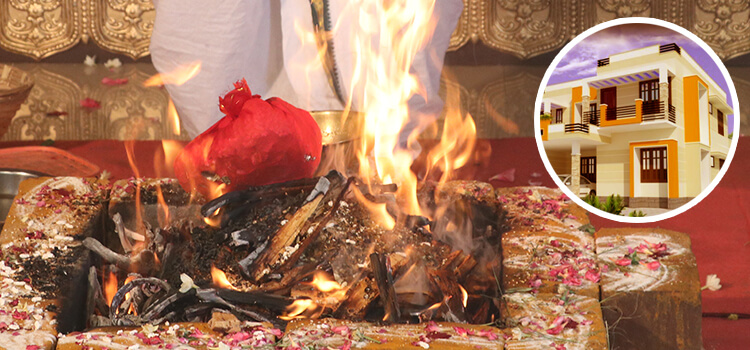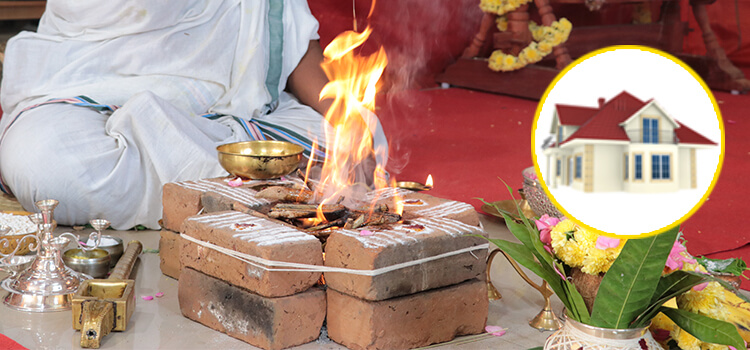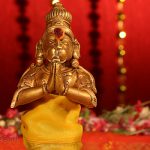Housewarming: Griha Pravesh
Buying a home is a very important milestone in one’s life. And as in the case of other major milestones like marriage, parenthood, etc., it is customary to perform Poojas and rituals to ensure that divine blessings are with us on the occasion. Entering a newly built house for the first time is an auspicious event and is called Griha pravesh. Some rituals are performed during this time with the purpose of eliminating any doshas like Shilpa dosh, Vaastu dosh, etc., which may invite negative energies into the house, thereby posing all kinds of problems that will plague the house owner later on. According to the Vaastu Shastra, the ancient and traditional Indian knowledge pertaining to the art of architecture, a new house should be occupied only after certain conditions have been met. For instance, the doors must be fitted properly, the roof covered, the house protected with walls, and the Vaastu God propitiated.
Fixing the Griha Pravesh Muhurtham
Once the house is completed, an astrologer must be consulted to find an auspicious time or muhurtham, for the Griha pravesh. The date is based on astrological calculations. Some months are ideal for this purpose. They include the months of Magha (January – February) good for gaining wealth, Phalguna (February – March) for good progeny and increase in wealth, Baisakh (April – May) for growth and prosperity, Jyeshta (May – June) for birth of son and buying cattle or luxuries.
The day before the Griha pravesh is held, the house must be swept and washed thoroughly. Mango leaves and fresh flowers must be used to decorate the doors of the house. To ensure that prosperity enters the house, banana stems must be tied to the poles. At the entrance and doorway, decorative rangolis should be drawn using rice flour.
Performing the Vaastu Pooja
Vaastu is very important while constructing a house. Vaastu Shastra lays down certain principles that must be followed when building homes or other structures. Ignoring these principles can cause many problems as they influence the flow of energy inside the building. A Vaastu Pooja must be done before entering the new house, to please the deity, Vaastu purush. Mantras are chanted to invoke the Vaastu purush’s blessings. This will usher in peace and banish all negative energies like jealousy and enmity emanating from others. To appease the Vaastu deity, an ash gourd should be broken by the man of the house. The broken ash gourd pieces must be left at the entrance at either side of the threshold of the house. The woman of the house must break a coconut and this too is placed on the threshold.

Kalash Pooja
The next step is the Kalash Pooja. A copper pot is filled with water, Navadhanya (nine kinds of grains) and a coin. A red cloth should then be used to wrap around a coconut and tied. The coconut is then placed on the kalash with mango leaves placed at the sides of the pot. The priest then performs Pooja to the pot by reciting holy mantras. When the Pooja is over, the husband and wife must carry the pot into the house and place it near the havan (ceremonial fireplace)
Before the traditional entry of the family members, a cow and a calf are made to enter the house first. This will invite auspicious energies and material prosperity into the house.
Homas
It is the custom to perform Homas during house-warming ceremonies. It is done to remove the three sins incurred during the construction of a new house. These sins are – digging the earth, cutting trees and breaking stones – and they constitute doshas. Homas help nullify the bad effects by invoking the deities’ blessings for protection and purification. A homa should be done to invoke Lord Ganesha and appease the Navagraha (nine planets) so that evil energies pervading the atmosphere are eliminated. They will also purify the household. The husband and wife as well as other family members have to sit around the fire when the priest recites the sacred mantras. It is also essential to propitiate Goddess Lakshmi for prosperity and overall well-being so a homa may be performed for the goddess too. Often people sprinkle gomutra (cow’s urine) inside the house as it is thought to be auspicious.
Boiling the milk ceremony
Once the homa is over, milk should be boiled in a new vessel at an auspicious time by the woman of the house. When the milk boils and spills over it signifies that there will be abundance. The boiled milk must first be offered to the kula devata (family deity). Then it can be given to the others who came for the Pooja.
It is important to feed the priest well after the Griha Pravesh ceremony. The guests too should be given a sumptuous meal. The members of the household should stay the night in the house. The house should be left unlocked and the lamp must burn through the night to attract spiritual energies. It also offers divine protection. It is also good to undertake a Satyanarayana Vrat after the Griha pravesh.
When not to do the Griha Pravesh?
Some days are not auspicious for Griha pravesh. They include Tuesdays, new moon days, the first day of the Tamil month, Tithis or the moon’s phases of 4, 9, and 14. It must not be performed when the woman of the house is pregnant.



I don’t think the title of your article matches the content lol. Just kidding, mainly because I had some doubts after reading the article.
Your point of view caught my eye and was very interesting. Thanks. I have a question for you.
Thanks for sharing. I read many of your blog posts, cool, your blog is very good.